We suppose that there are one hemisphere and three triangles in a 3D space. The center point of the hemisphere’s bottom is denoted by C. The radius of the hemisphere’s bottom is represented by R. The normal vector to hemisphere’s bottom is denoted by n.
The first triangle is given by the three points V1, V2 and V3. The second triangle is given by the three points V4, V5 and V6. The third triangle is given by the three points V7, V8 and V9. The positions of the points V1, V2, …, V9 are arbitrary. Now, we further assume that an eye is located at the point E. Note that the triangles may block the line of sight from the eye to the hemisphere’s surface; hence some region of the hemisphere’s surface may not be seen by the eye.
Please develop a method to estimate the amount of the area of the hemisphere’s surface which can be seen by the eye? Here is a code for the rectangle rather than hemisphere:
function r = month_1()
P1 = [0.918559, 0.750000, -0.918559];
P2 = [0.653394, 0.649519, 1.183724];
P3 = [-0.918559, -0.750000, 0.918559];
P4 = [-0.653394, -0.649519, -1.183724];
V1 = [0.989609, -1.125000, 0.071051];
V2 = [1.377838, -0.808013, -0.317178];
V3 = [1.265766, -0.850481, 0.571351];
V4 = [0.989609, -1.125000, 0.071051];
V5 = [1.265766, -0.850481, 0.571351];
V6 = [0.601381, -1.441987, 0.459279];
V7 = [0.989609, -1.125000, 0.071051];
V8 = [1.377838, -0.808013, -0.317178];
V9 = [0.713453, -1.399519, -0.429250];
E = [1.714054, -1.948557, 0.123064];
C = [0,1,0];
Radius = 2;
n = [0,1,0];
%hold on
patches.vertices(1,:)= P1;
patches.vertices(2,:)= P2;
patches.vertices(3,:)= P3;
patches.vertices(4,:)= P4;
patches.vertices(5,:)= V1;
patches.vertices(6,:)= V2;
patches.vertices(7,:)= V3;
patches.vertices(8,:)= V4;
patches.vertices(9,:)= V5;
patches.vertices(10,:)= V6;
patches.vertices(11,:)= V7;
patches.vertices(12,:)= V8;
patches.vertices(13,:)= V9;
patches.faces(1,:)= [5,6,7];
patches.faces(2,:)= [8,9,10];
patches.faces(3,:)= [11,12,13];
patches.faces(4,:)= [1,2,3];
patches.faces(5,:)= [1,3,4];
patches.facevertexcdata = 1;
patch(patches);
shading faceted; view (3);
% dispatch([1,1,1])
hold on
Num = 20;
Sum = 0;
%Srec = norm(cross(P1 - P4, P3 - P4));
for i = 1:Num
x1 = rand;
x2 = rand;
v1 = P1-P4;
v2 = P3-P4;
Samp = P4+v1*x1+v2*x2;
ABC = fun_f(E, Samp, V1,V2,V3)*fun_f(E,Samp, V4, V5, V6)*fun_f(E,Samp, V7,V8,V9);
Sum = Sum + ABC;
% if ABC ==1
% plot3(Samp(1), Samp(2), Samp(3),'r +'), hold on
% else
% plot3(Samp(1), Samp(2), Samp(3),'b +'), hold on
% end
%............................
[x, y, z]= sphere;
patches = surf2patch(x,y,z,z);
patches.vertices(:,3) = abs(patches.vertices(:,3));
patches.facevertexcdata = 1;
patch(patches)
shading faceted; view(3)
daspect([1 1 1])
%............................
end
%r = Sum/Num;
%view(31, 15)
%end
r = Sum/Num*norm(cross (P1-P4,P3-P4));
disp(sprintf('the integration is: %.5f',r));
disp(sprintf('the accurate result is: %.5f',norm(cross(P1-P4,P3-P4)/4)));
function res = fun_f(LineB, LineE, V1, V2, V3)
O = LineB;
Len = norm(LineE-LineB);
v = (LineE-LineB)/Len;
N = cross(V2-V1, V3-V1)/norm(cross(V2-V1, V3-V1));
if dot(N,v)~=0
tp = dot(N, V1-O)/ dot(N,v);
% if tp >=0 && tp <= (1:3);
P = LineB+tp*v(1:3);
A = V1 - P;
B = V2 - P;
Stri1 = norm(cross(A,B))/2;
A = V1 - P;
B = V3 - P;
Stri2 = norm(cross(A,B))/2;
A = V3 - P;
B = V2 - P;
Stri3 = norm(cross(A,B))/2;
A = V1 - V2;
B = V3 - V2;
Stotal = norm(cross(A,B))/2;
if (Stri1 + Stri2 + Stri3)> (Stotal + 1e-8)
res = 1;
else
res = 0;
end
else
res =1;
end
end
end


















